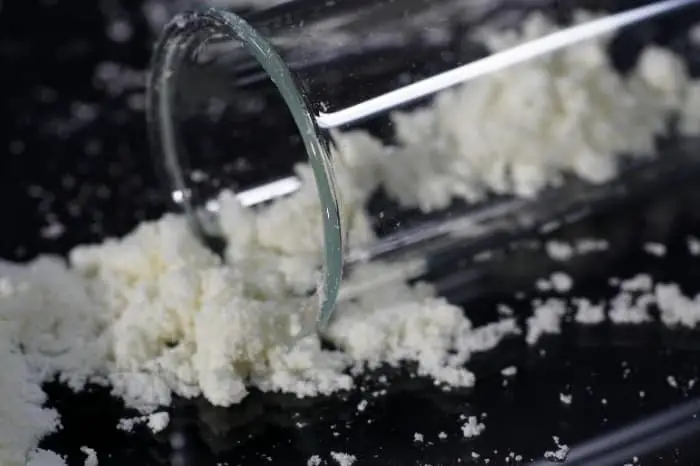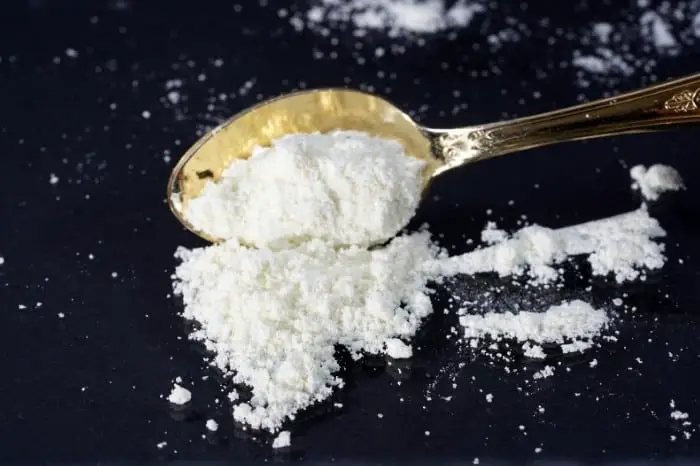Last Updated on January 21, 2023
Most farmers and at-home gardeners often wonder about the use of potassium sulfate for plants, whether it dissolves in the soil and how exactly to use it. Here we discuss this fertilizer so that farmers can have a better understanding of it and its application.
Potassium sulfate is an excellent source of potassium for plants. It provides the essential plant nutrient in a stable PH-neutral form. With some brands certified as organic, you can choose from a wide variety of commercially available brands.
Potassium fertilizers come in different types. If you don’t understand their differences, it can be difficult to distinguish them. Potassium sulfate is the best choice for both organic and conventional gardeners.
Is Potassium Sulfate Soluble?
Not all potassium sulfate fertilizers are alike. There are synthetic potassium sulfates and those that are organic certified. The potassium sulfate that comes from natural mining sources is the one that is certified organic. This potassium has not undergone any kind of further processing.
Unfortunately, some unprocessed raw materials are not water-soluble. They carry unwanted minerals that do not help the plant when put into the soil. Only a few sources of organic potassium sulfate are soluble. Knowledgeable sales staff should be able to tell you the source of their fertilizers. And whether their product is soluble or not.
While some brands of potassium sulfate fertilizer claim to be 100% soluble, potassium sulfate itself has low solubility when compared to other potassium fertilizers such as potassium chloride. This may present challenges when it is applied in the soil, as it will not dissolve well through irrigation.
It is also important to know the grade of the potassium fertilizer you are buying. Large particles of potassium sulfate are barely soluble and not a good choice. The best grade is the fines with small particles about 0.015mm and below. Fine grades dissolve more easily and are better to use in foliar sprays or irrigation.
Check this organic fertilizer from Down to Earth that provides a source of potassium, magnesium, and sulfur for your plants.
Essential Functions of Potassium Sulfate in Plants
Potassium sulfate helps to complete a majority of essential functions in plants. Some of these functions include:
- Activating enzyme reactions
- Synthesizing proteins
- Forming starch and sugars
- Regulating water flow in leaves and cells
In most cases, potassium in the soil is too low to support healthy plant growth. And for this reason, you can choose to add potassium sulfate to the soil in which you grow your plants.
How To Use Potassium Sulfate In Soil
A potassium deficiency in plants usually manifests itself in leaves turning yellow. To provide fast-acting potassium to such plants, it is best to use foliar feeding sprays. The foliar spray made from clean water and soluble potassium stops the problem from spreading.
Highly concentrated potassium fertilizer can burn the leaves. Be sure to use mild concentrations of foliar sprays. You would rather spray a mild concentration many times rather than use the concentrated one. Fertilizer packaging also usually comes with directions on it. You can also follow the application directions on the packaging if you are unsure.
The application rate depends on the quality of your soil. Apply 2 pounds of potassium sulfate per 100 square feet or 2 tablespoons per gallon of water.
What Does Potassium Sulfate Do For Plants?
As we have already stated, potassium sulfate is a source of potassium for plants. Potassium is an essential plant nutrient. Soils normally have an insufficient concentration of this nutrient to support healthy plant growth, so it needs to be supplemented via the addition of fertilizer.
So what does potassium sulfate do for plants when it is present in the soil? The addition of potassium sulfate to the soil will help improve the yield and quality of the plants that you are growing. It does this by positively contributing to essential plant functions such as activating the reactions of enzymes, the synthesis of proteins, the formation of starches and sugars, as well as the regulation of water flow in the leaves and cells. When these plant functions are supported, it sets the plants on a great path to good health and productivity.
Potassium sulfate is also a source of sulfur, another plant nutrient. Sulfur is used by plants to synthesize protein and is also required for enzyme function. Just like potassium, sulfur can too be deficient in soils. This deficiency will lead to inadequate plant growth.
Both the nutrients that plants get from potassium sulfate fertilizer are crucial for the health and well-being of plants. They must be provided with these nutrients in the right concentrations. An excess or lack of one or both of these nutrients will have your plants sick in no time.
How Much Potassium Sulfate Per Gallon?
Knowing the correct application rate of potassium sulfate is very important. Too little can greatly hamper the growth and plants and too much may burn otherwise healthy plants.
If you are doing a soil drench, the recommended dosage is 1-2 tablespoons per gallon of water. Make sure that this solution is evenly mixed before evenly drenching the soil with it.
The recommended dosage for potassium sulfate, if you are going to spray it on the plant leaves, is 1/2-1 teaspoon per gallon of water. Apply with even coverage over the leaves for the best results.
It is vital to know how to use potassium sulfate fertilizer. This is because it is different from other potash fertilizers. Its solubility may be low, and therefore will have different rules of application. To avoid damaging your plants, follow the prescribed application rates.
When Should You Add Potassium Sulfate To Your Garden?
So when should you apply potassium sulfate to your plants in the garden? Is it something to do as often as you irrigate or is there a particular time to do it? As with other nutrients, plants only take up potassium when they are in their active growth stage. On top of that, the soil in which they are planted has to be moist. The soil has to be moist or the potassium sulfate fertilizer has to be applied in liquid form so that the plants can take it up efficiently.
The best time to apply or add potassium sulfate to your plants is from early spring to late summer, which is when plants are in their best growth phase. Adding the fertilizer at the wrong time in the growth cycle of the plants will only result in waste, as it will not be taken up and used efficiently for the intended purposes.
Conclusion
This article provided you with information to help answer the questions that you had about the use of potassium sulfate for plants. Just like the human body, plants also experience a lack of necessary nutrients in the soil. A fertilizer that replenishes the plant’s nutrients is the same as supplements that humans need. Likewise, as you take your supplement today, be sure to check if your plants need some.
Before purchasing fertilizer of any kind for your plants, check whether they are natural or synthetic. Organic potassium for plants is best and will be obtained from natural or organic potash fertilizers.
FAQs
What is the best way to add potassium to soil?
Potassium (K) is one of the most important plant nutrients. It is present in soil in different forms and functions as a catalyst for many plant processes. In general, potassium is an essential nutrient for plants. It is not readily available from the soil. Plants can absorb potassium only when it is present in solution (e.g., in water). The amount of potassium in soil is very low and is also easily leached by rainfall and irrigation.
The best way to add potassium to soil is to apply potassium fertilizer in the form of potassium chloride. This material is soluble and has a high concentration of potassium. It is very easy to work with and can be applied either as a liquid or as granules. However, if you want to get the most out of your potassium fertilizer, you need to know how much potassium fertilizer to use. If you do not know the right amount, you will not get the full effect of your application. Potassium is an important plant nutrient. It is needed for proper development of roots and other plant parts. Plants absorb potassium from the soil. They cannot take potassium directly from their food (plants use photosynthesis to produce energy). Instead, they absorb potassium from the soil. You need to supply potassium to plants in two forms: organic and inorganic. Potassium in the form of organic material is found in soil and in organic matter that has been added to the soil. It can also be found in fertilizers. Potassium in the form of inorganic material is found in fertilizers.
How do you make liquid potassium fertilizer?
Plants use potassium to help build strong cell walls, improve photosynthesis, and maintain proper cellular levels of electrolytes. Potassium is an essential nutrient for plants and is considered a macronutrient. Like many other nutrients, potassium is used by plants in small amounts. Most plants will use potassium at the rate of 1% of their dry weight. To make liquid potassium fertilizer, mix a 1-pound bag of granular potassium chloride with water and stir to dissolve. Add 1/4 pound of magnesium sulfate per gallon of water and stir again. Filter the mixture through a fine mesh strainer to remove any remaining solids. Store the fertilizer in a glass container.
What plants need a lot of potassium?
Potassium is an essential mineral for plant growth. It is needed in the formation of chlorophyll, and it also helps regulate water and sugar levels in plants.
Potassium is also involved in the production of chlorophyll, and is used to make cell walls and connective tissue. Plants require potassium to help them absorb nutrients from the soil. The amount of potassium you need to feed your plants depends on several factors. These include:
The type of plant you're feeding. Plants that are grown in soil tend to require more potassium than those that grow in water. Some types of plants, such as tomatoes, require only a small amount of potassium to grow. Other plants, such as cacti, will need a lot of potassium. The time of year when you feed the plant. When you feed a plant in the spring, it will absorb more potassium than it will when you feed it during the summer.

Lory is an avid gardener who loves spending time outdoors. She is passionate about using her green thumb to create beautiful, lush gardens for her friends and family. She finds joy in tending to her garden, trimming plants, and cultivating new species. She loves to share her knowledge and experience with others who have a similar enthusiasm for gardening. Lory is a true nature enthusiast who loves to share her enthusiasm for the outdoors with all who meet her.


